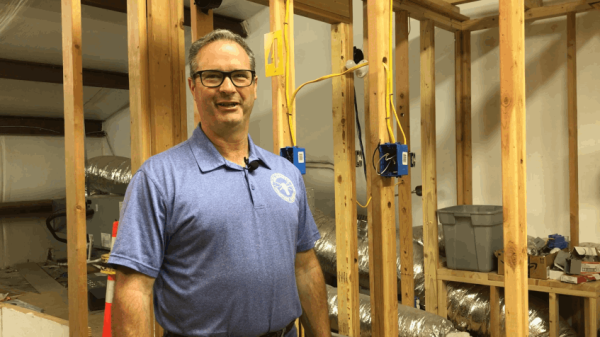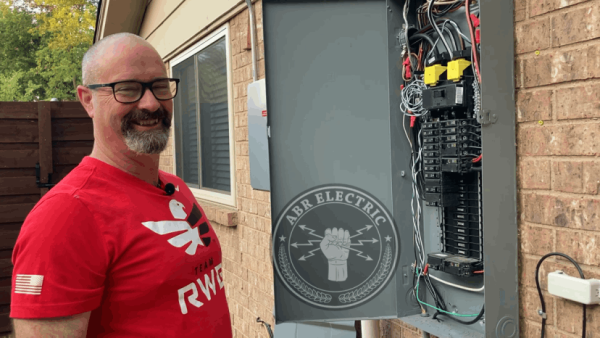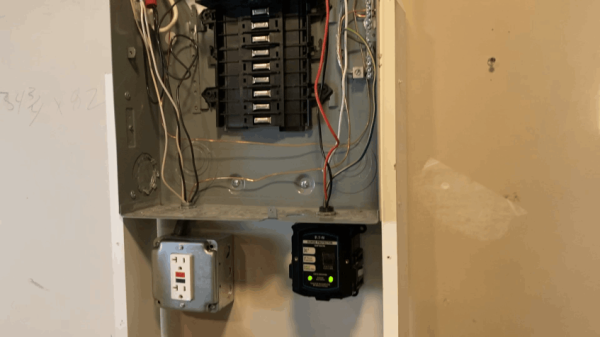ABR Electric Now Installing Eaton’s Latest Surge Protection Technology to Shield North Texas Homes from Devastating Storm Damage
McKinney-Based Electrical Contractor Brings Military-Grade Power Defense to DFW Metroplex After Record 2025 Storm Season
McKinney, Texas, United States, 11th Nov 2025 – As North Texas continues to experience increasingly severe weather patterns, the surge protection device industry is reporting unprecedented demand from homeowners seeking to protect valuable electronics and smart home systems from storm-related power surges.
The global surge protection devices market reached $3.6 billion in 2024 and is projected to grow at 6.4% annually through 2034, driven by what industry analysts describe as a perfect storm of factors: rising electronics values in homes, more frequent severe weather events, and growing awareness of surge-related damage risks.

The Storm Damage Crisis
The Insurance Information Institute reports nearly 61,000 homeowners insurance claims included lightning damage in 2021 alone, with an average settlement exceeding $21,000 per claim. However, experts note that these figures only capture direct lightning strikes—the more insidious threat comes from indirect surges traveling through power lines during storm events.
“When lightning strikes near a power line, the electrical energy can boost electrical pressure by millions of volts,” explains the National Weather Service. Lightning carries approximately 300 million volts and 30,000 amps—compared to a standard household outlet’s 120 volts and 15 amps—making lightning-induced surges particularly devastating to modern electronics.
Local electrical contractors including ABR Electric in McKinney report seeing dramatic increases in surge protection inquiries following this year’s severe storm season, which brought multiple damaging weather events to the Dallas-Fort Worth region including tornadoes, high winds, and widespread power disruptions.

The Smart Home Vulnerability
Modern homes now contain an average of 25-30 sensitive electronic devices vulnerable to voltage spikes, a dramatic increase from previous decades. Smart home ecosystems now often hold electronics worth more than $15,000, exposing households to material financial risk when surges occur.
“Microprocessors in connected lighting, appliances, and security systems are highly sensitive to voltage transients, and a surge harming one node can propagate through the network,” according to industry technical experts analyzing smart home protection needs.
According to research from the U.S. Department of Energy, power surges can lead to equipment damage, with estimates suggesting that up to 25 percent of equipment failures are attributable to these surges. This statistic has particular relevance for North Texas homeowners who have invested heavily in whole-home automation, premium HVAC systems, and electric vehicle charging infrastructure.
Perhaps most concerning for homeowners is the delayed-failure phenomenon that electrical forensics experts have documented extensively. According to insurance claim specialists, devices often work fine initially but gradually develop problems after surge events, with weakened components continuing to function while “living on borrowed time.” North Texas contractors report increased service calls from homeowners discovering equipment failures weeks after major storm events—all traceable to previous surge damage.
infrastructure, selection of appropriately rated devices, and integration with the home’s overall electrical safety system. DIY installations or work by unlicensed contractors frequently fails to provide advertised protection levels and can create safety hazards.

Industry Response and Technology Advances
Major manufacturers including Eaton, Schneider Electric, and Siemens have responded to growing demand by advancing surge protection technology substantially in recent years. “For over three decades, Eaton has offered solutions coming in all common voltages and configurations, in surge current capacity ratings up to 800 kA,” notes the company’s technical documentation, adding that devices “are independently tested and backed by the largest engineering and technical support team in the industry.”
“Thanks to Eaton’s expert service and dedicated support, we can now focus our energy on serving our community rather than addressing equipment failures. We have saved at least $15,000 in repairs since installing the surge protection devices,” reports Chad Colby, Utility Manager at Rossville Area Wastewater Department.
The latest UL 1449 5th Edition certified devices offer substantially improved protection capabilities compared to older surge protection technology, with features including weatherproof NEMA 4 enclosures rated for extreme temperature swings, LED status indicators for real-time monitoring, and modular designs allowing future expansion.
The Defense-in-Depth Approach
Industry best practices now emphasize what manufacturers call “defense in depth”—combining whole-home surge protectors installed at electrical panels with point-of-use devices protecting critical equipment. This layered approach addresses both major surge events and smaller transients, with insurance carriers reinforcing this trend by lowering premiums for protected homes.
Local contractors including ABR Electric in the Collin County area report that properly protected homes avoided the widespread electronic failures that plagued unprotected residences during recent severe weather events. Internal sources within homes are responsible for up to 80% of power surges homeowners experience, created when high-draw appliances cycle on and off, meaning surge protection provides year-round benefit beyond storm season preparation.
Regional Market Dynamics
North America leads surge protection device adoption with 40% of total market revenue, driven by stringent electrical safety regulations, high electronics ownership, and frequent severe weather exposure. The U.S. market specifically is projected to surge from $2.5 billion in 2024 to $4.8 billion by 2033, expanding at 8.5% annually.
Recent updates to the National Electrical Code now require Type 1 or Type 2 surge protection devices in residential panelboards, affecting over 1.2 million new constructions. Texas faces particular surge protection challenges due to its combination of severe thunderstorm frequency, aging electrical infrastructure, and rapid smart home technology adoption. North Texas averages 10-15 severe thunderstorm days annually, with 2025 proving especially volatile.
The Professional Installation Factor
Industry experts emphasize that surge protection effectiveness depends critically on proper installation by licensed electricians. Electrical engineering firms conducting damage assessments note that improper surge protection installation often leaves homes vulnerable despite having protective devices installed.
Professional electricians trained in lightning strike and surge evaluation emphasize that “the ability to properly evaluate, identify, and resolve electrical problems of this type requires proper training, equipment, and experience. Not every electrician is capable of doing this work.”
Proper installation requires correct grounding, appropriate bonding to the home’s electrical infrastructure, selection of appropriately rated devices for the application, and integration with the home’s overall electrical safety system. Local contractors such as ABR Electric (TECL #27762) serving the McKinney and Collin County area report that DIY installations or work by unlicensed contractors frequently fails to provide advertised protection levels and can create safety hazards, underscoring the importance of professional installation for effective surge protection.

Insurance Industry Involvement
Insurance carriers are increasingly involved in surge protection promotion, with some utilities and insurers offering premium discounts or coverage guarantees—up to $5,000 for appliances in some U.S. programs—encouraging homeowners and small businesses to install whole-home surge protection devices. Some manufacturers including Eaton now offer connected equipment warranties providing $25,000 to $75,000 coverage for electronics damaged by surges, adding an additional layer of financial protection for homeowners making the investment.
Looking Forward
With climate patterns driving more frequent severe weather and smart home adoption projected to reach 478 million connected households globally by 2025, industry analysts expect sustained growth in residential surge protection demand throughout the remainder of the decade. Future devices are expected to incorporate remote monitoring capabilities, real-time voltage tracking via mobile applications, and integration with whole-home energy management systems.
For North Texas homeowners, the message from industry experts and local contractors is clear: with thousands of dollars in vulnerable electronics, increasingly severe weather patterns, and affordable protection technology available, whole-home surge protection represents essential infrastructure rather than optional enhancement.
Homeowners seeking surge protection information can consult licensed electrical contractors for home assessments evaluating surge protection needs based on home size, equipment inventory, and specific risk factors. Professional installation by qualified electricians ensures systems are properly grounded, bonded, and integrated with existing electrical infrastructure for maximum effectiveness and safety.
About Surge Protection Technology
Surge protective devices (SPDs) are electrical safety systems that protect equipment from transient voltage spikes caused by lightning strikes, utility grid switching, or internal load changes. Modern SPDs use metal oxide varistor (MOV) technology combined with gas discharge tubes and thermal protection to absorb or redirect dangerous voltage spikes before they reach sensitive electronics. Industry standards including UL 1449 5th Edition and IEEE specifications ensure devices meet rigorous safety and performance requirements for residential and commercial applications.
Company Details
Organization: Local Electrician installs Eaton
Contact Person: James Adams
Website: https://whole-house-surge-protection.pages.dev/
Email: Send Email
Address: HWY380
City: McKinney
State: Texas
Country: United States
Release Id: 11112536786
